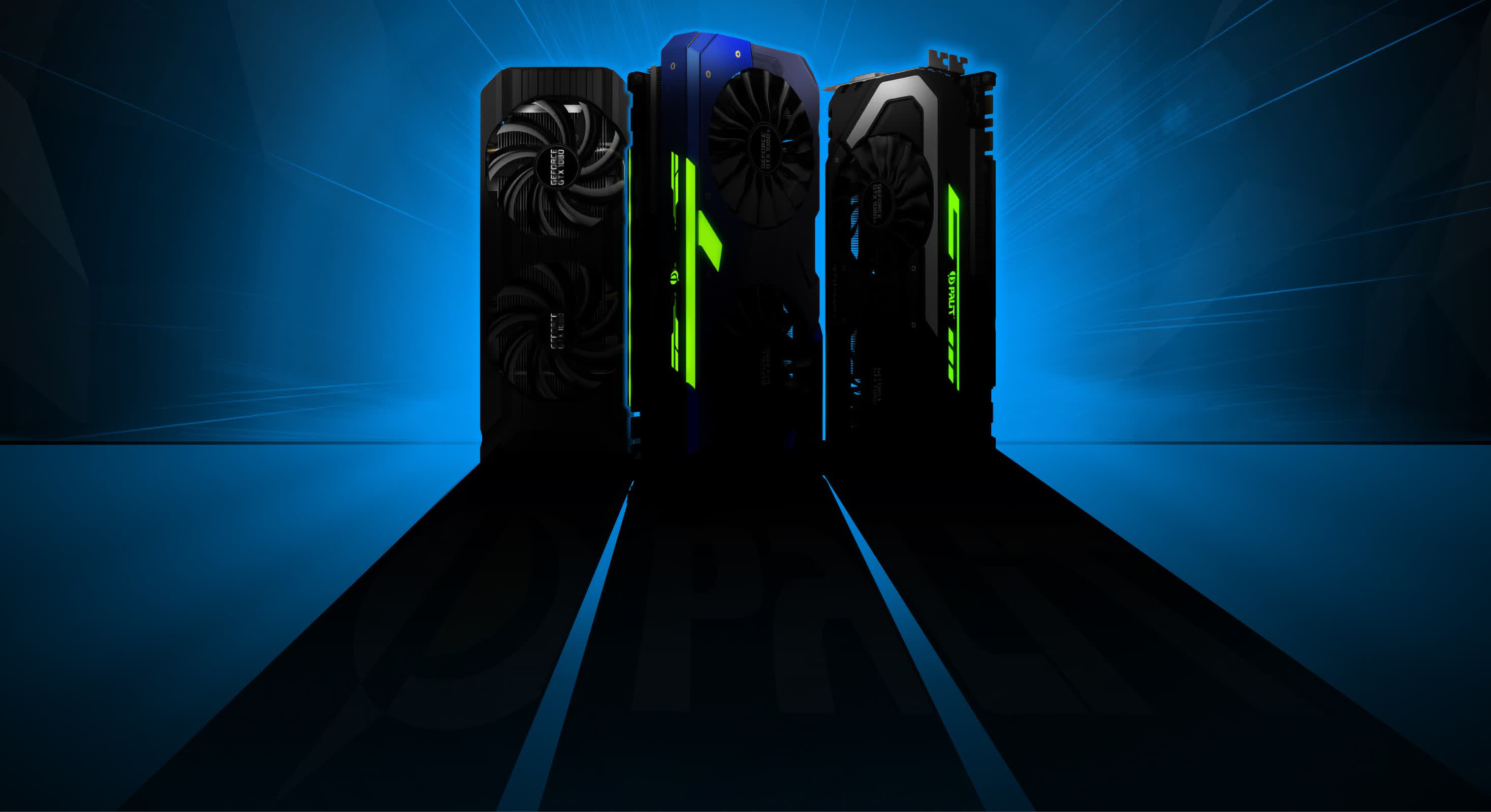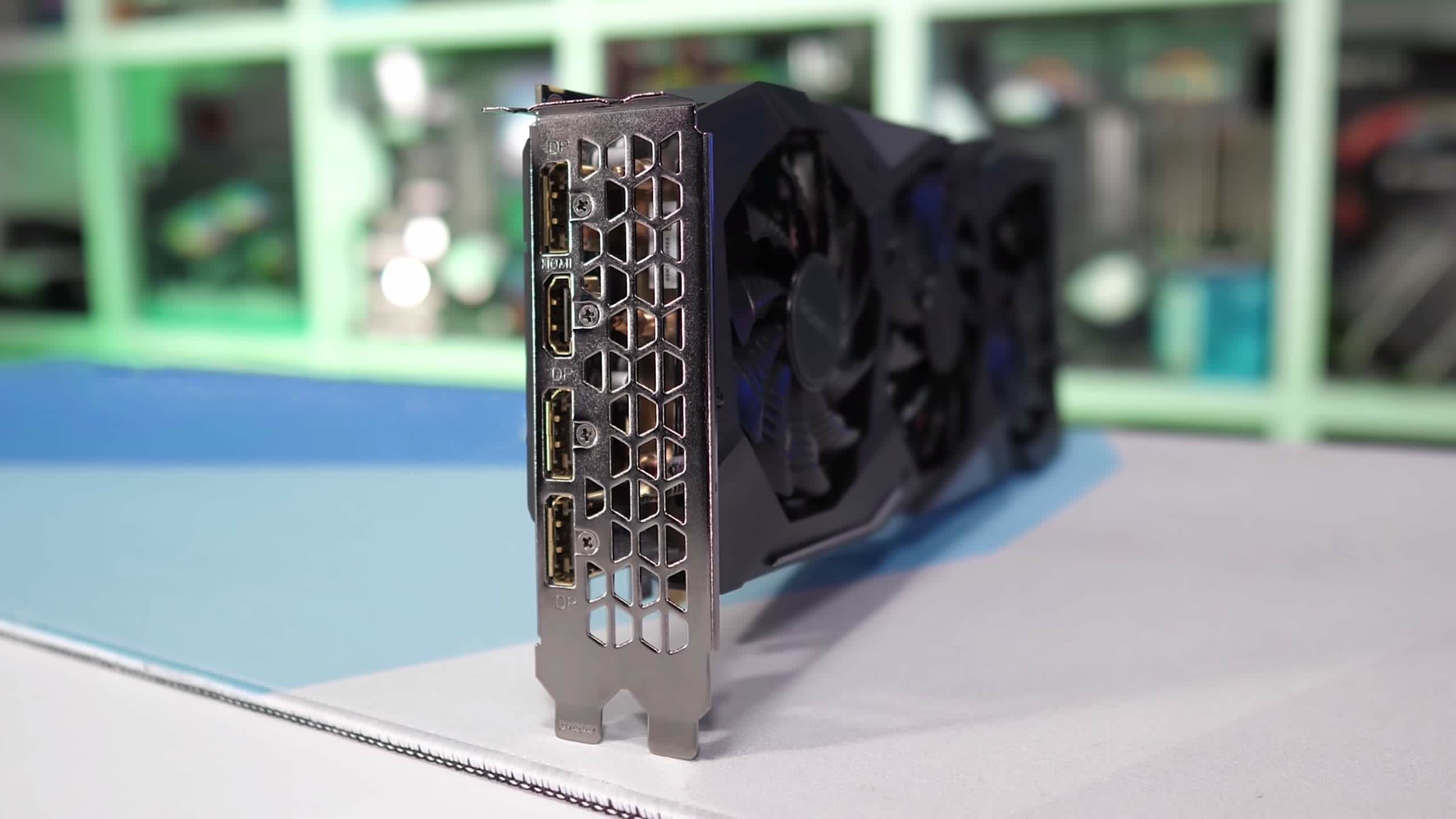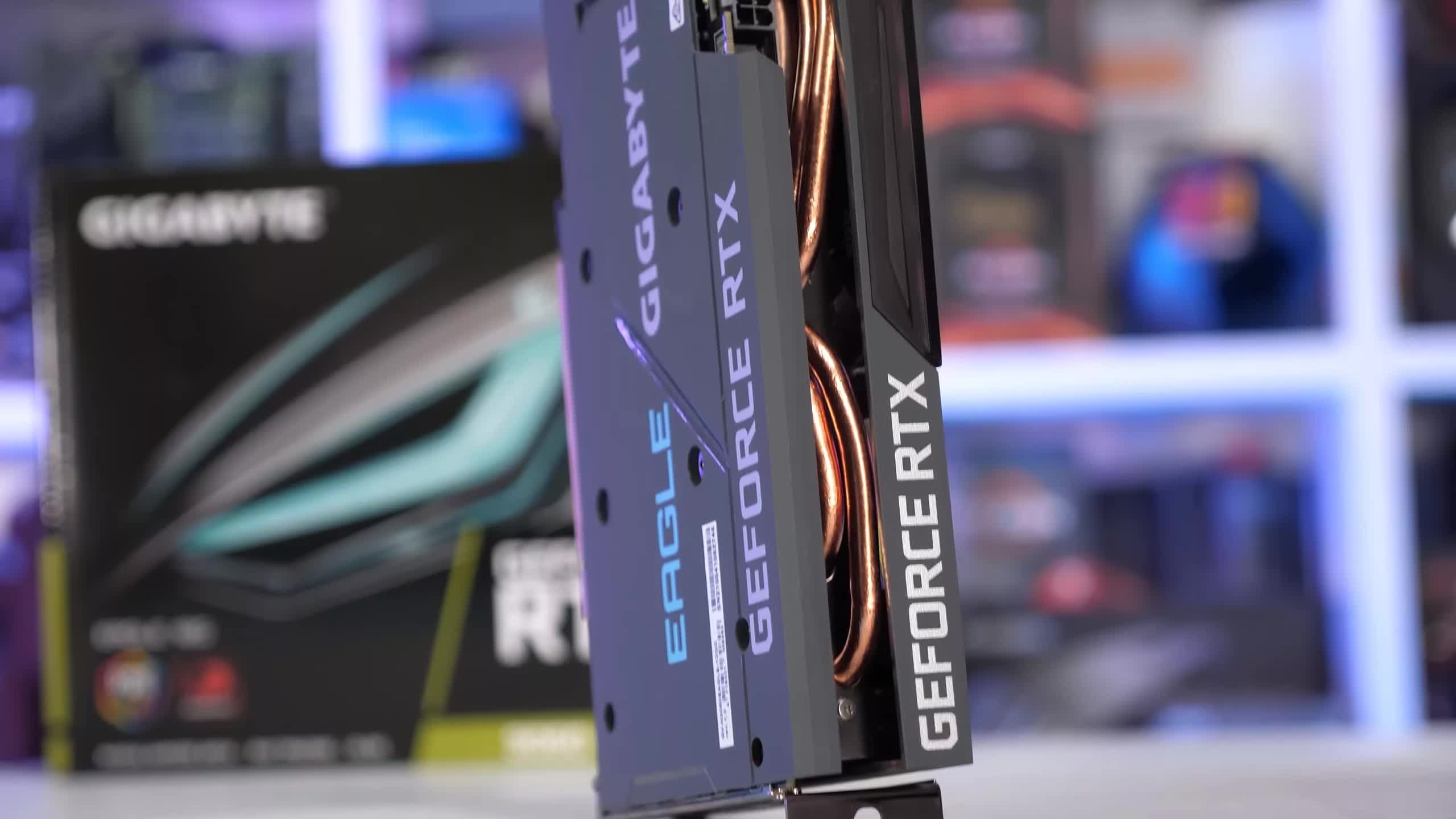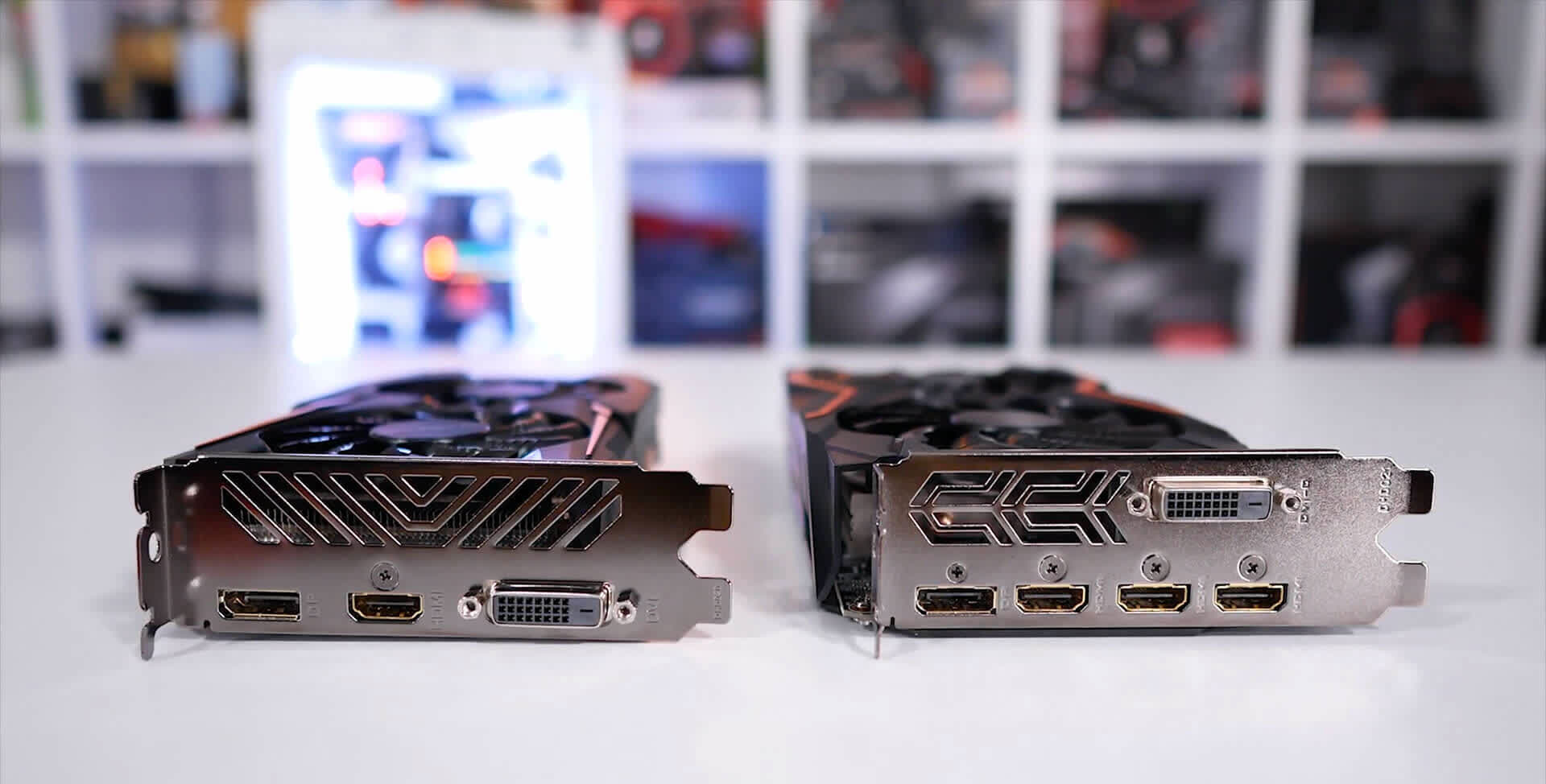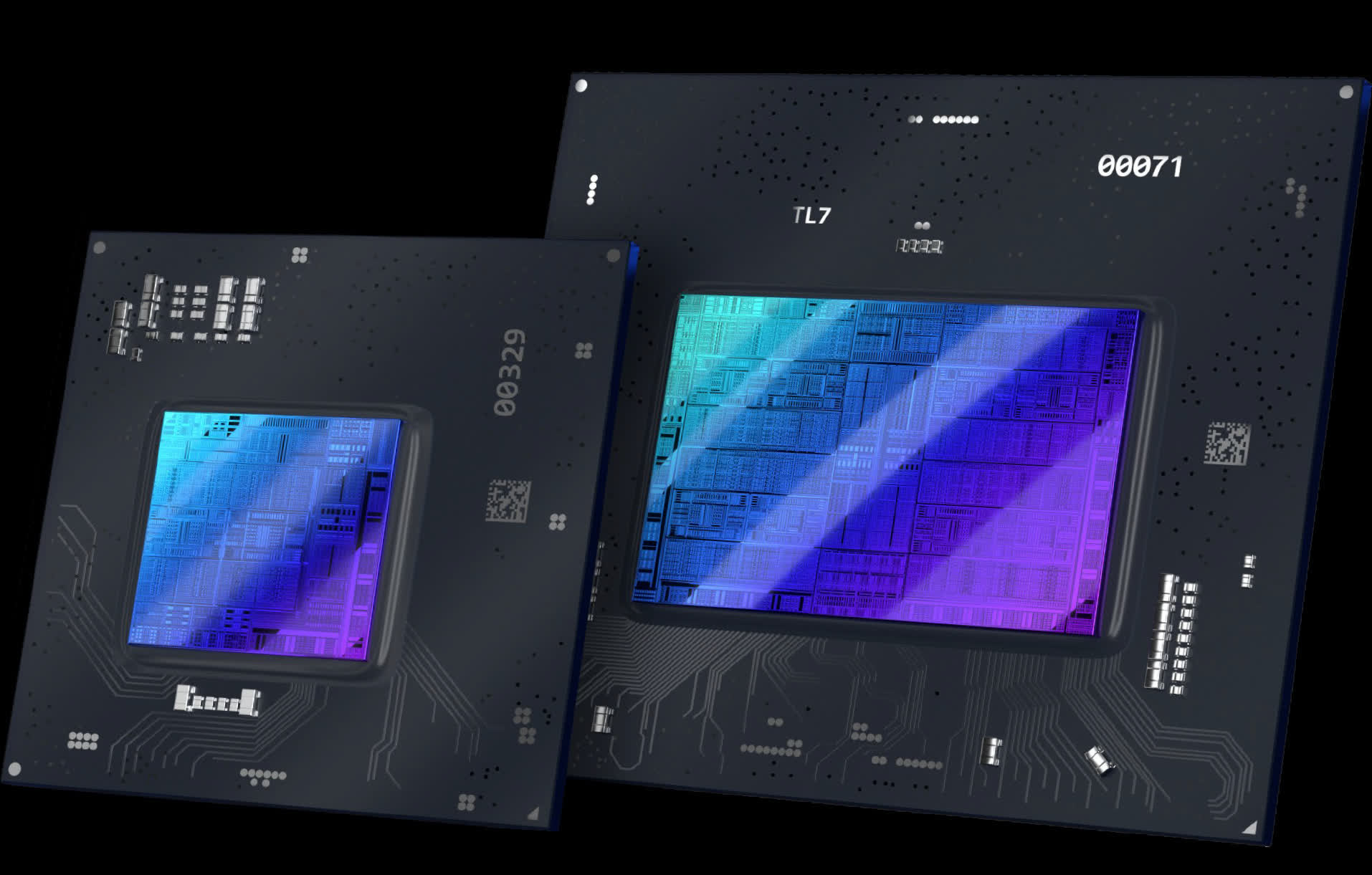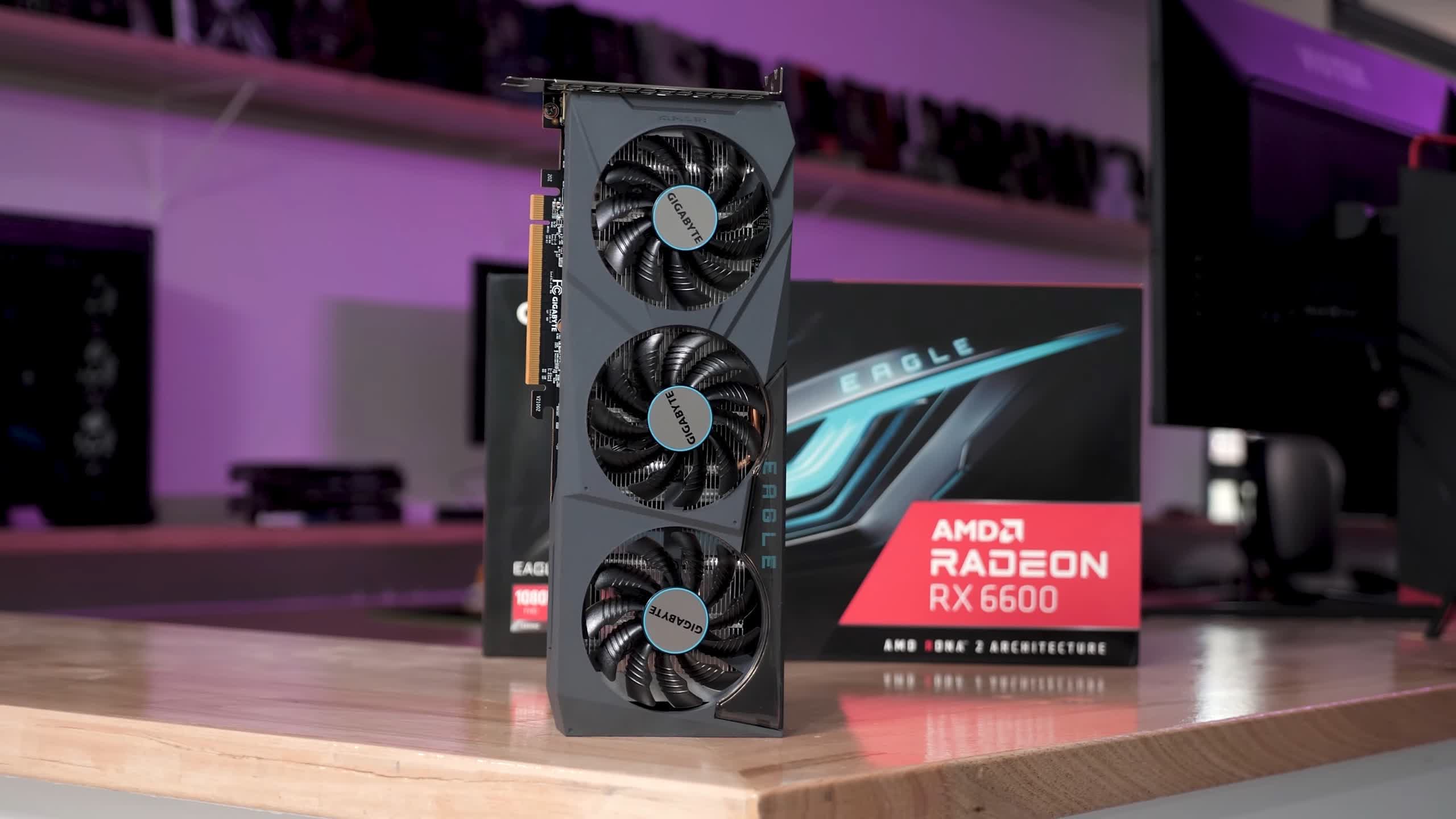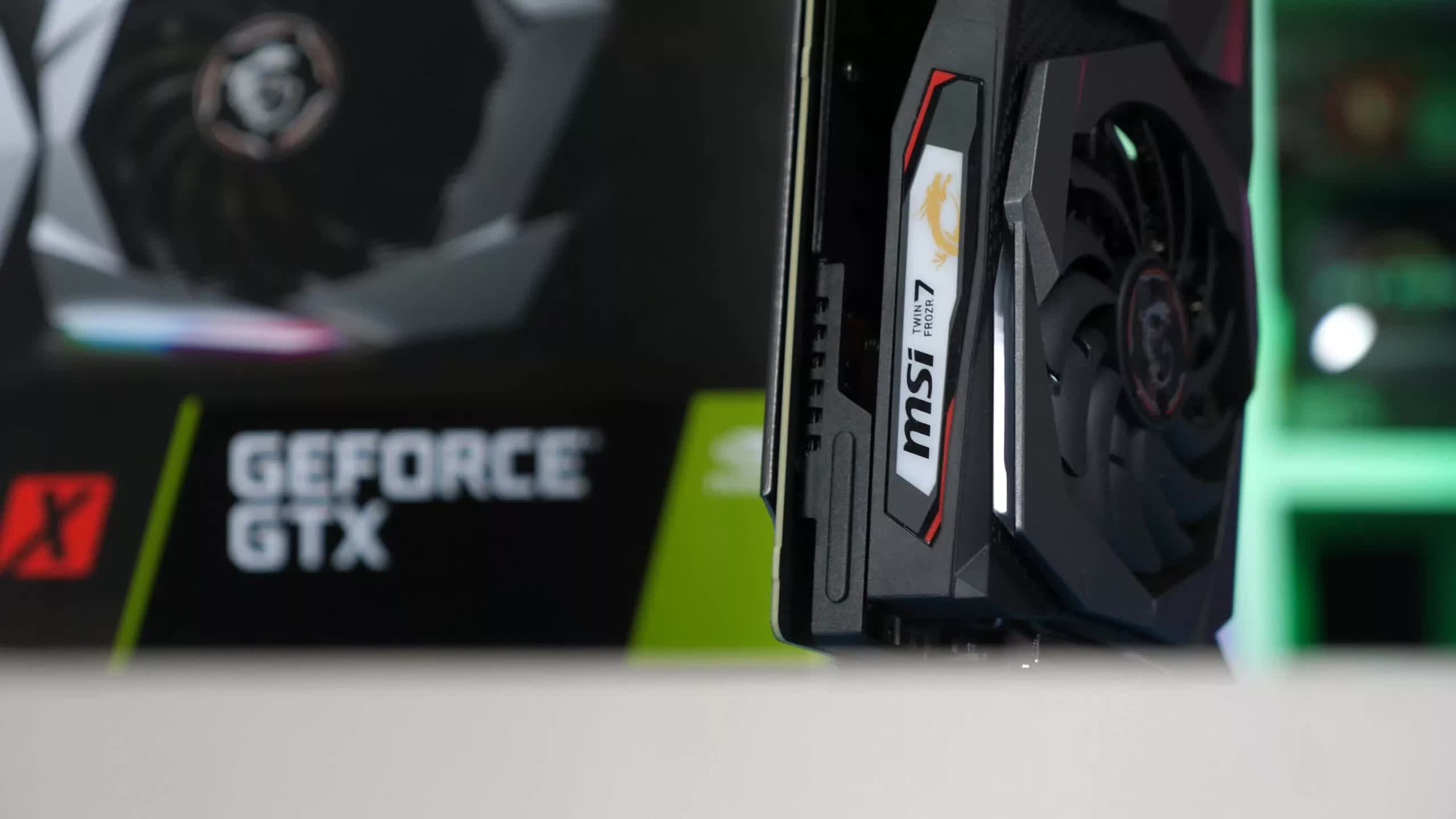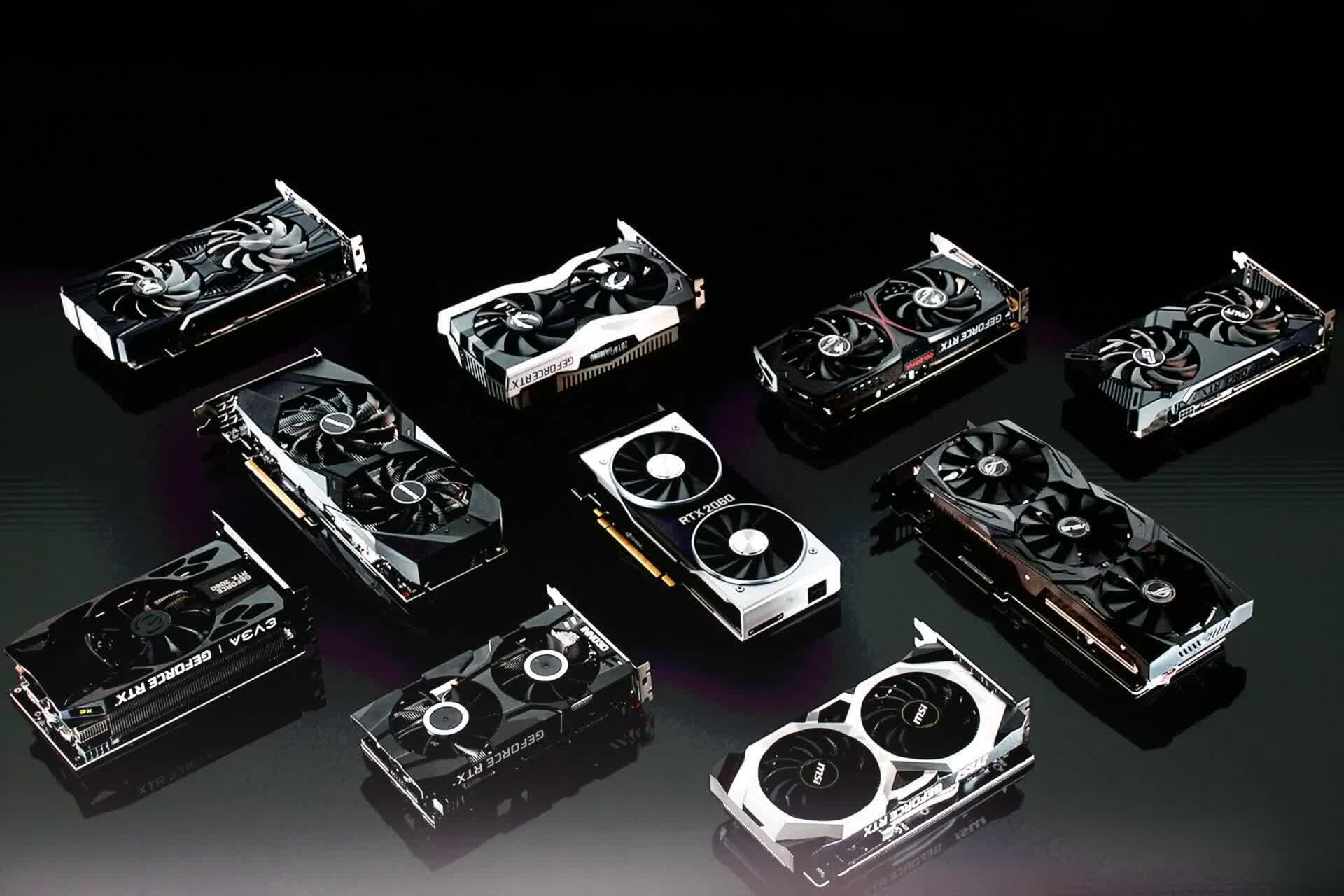It's time to take a look at the current state of the GPU market in our monthly update feature. In what shouldn't be a surprise to anyone, graphics cards are still overly expensive and everyone involved is still making a ton of cash. To cite one example, Nvidia just announced their quarterly earnings which included a huge jump in year-on-year revenue for their gaming business. So if you're a GPU manufacturer, you can be delighted with the current situation, and if you're a GPU buyer you'll be crying yourself to sleep.
Updated: See our latest GPU Pricing Update here.
In this edition of the GPU pricing update, we're not going to spend as much time talking about the current retail market because not much has changed over the last few months. Pricing of graphics cards on store shelves remains high, availability is pretty good in most regions, it's just that the actual prices of those GPUs are inflated due to a variety of market pressures we've been talking about for months now – and all of it is unlikely to change throughout the busy holiday shopping period.
In fact, we've been told by a couple of retailers that GPU sales right now aren't particularly great as interest in cards at current prices is low, but they can't reduce prices due to insidious tactics from suppliers like bundling and simple price inflation. So there appears to be a bit of a stalemate on that front.
What we do want to cover is the bigger question on everyone's mind for the past year: Will GPU pricing ever go down? When will it go down? And, are there any upcoming solutions to the problem in the works?
Upcoming Releases, a Possible Solution?
One particular story that's been doing the rounds recently is that of an Nvidia RTX 2060 refresh with 12GB of VRAM. This launch has been bubbling away for some time now, with reports going back months, but it seems that things are gearing up to produce an RTX 2060 refresh sometime in January. Gigabyte models are starting to appear at the ECC, for example. Some are calling this a GPU aimed to combat miners and ease stock woes, but is this really going to be the case?
From a production standpoint, it should be cheaper to build an RTX 2060 than Nvidia's other GPUs. It uses a previous-gen Turing GPU, which is built using TSMC's older and cheaper 12nm node, which is in slightly less demand than their leading edge nodes. However, the RTX 2060 still uses GDDR6 memory, the same memory used on current GPUs including the RTX 3060, and the same amount as the 3060 at 12GB. So if there are any supply constraints on GDDR6 memory, or pricing on that memory is still high, the RTX 2060 won't necessarily become a real solution to the GPU availability crisis.
However, because it's built on a mature node, it is possible that total supply for Nvidia GPUs will increase, provided they have bought additional capacity at TSMC, and we have no evidence to know whether they have or not. If supply is fully maxed out on Samsung's 8nm node with no room to buy additional capacity, and if supply of GPU dies is the key limitation for additional GPU production, then it's possible this launch will increase supply.
But that's a lot of "ifs" and we're not convinced that simply reverting to an older design on a more mature node will significantly boost the supply of GPUs. Throughout last year we heard of many price hikes and availability issues for all sorts of components used in putting together a graphics card, everything from memory and surface components, to the PCBs themselves – solving foundry capacity is not the only limiting factor.
The other big angle is, of course, mining. The theory is that the RTX 2060 is a less attractive card for miners compared to many others. However, that's not currently the case going by Whattomine's numbers. The RTX 2060 is more profitable right now than the RTX 3060, but that's from mining smaller coins. It's true the RTX 2060 is a less attractive option than a 3060 for Ethereum, but that's not the only cryptocurrency you can mine. Also consider that even the RX 6600 XT is being snapped up by miners and its profitability is hardly amazing, so we don't think the RTX 2060 will be any less attractive. In other words, we suspect it'd still be bought up for mining.
In our opinion, releasing an RTX 2060 refresh and expecting that to have a significant impact on GPU pricing is far fetched. It's also highly unlikely that any refresh would be available at whatever MSRP Nvidia decides to set. They already have the RTX 3060 at $330, AMD has the Radeon RX 6600 at $330, and there's a strong used market for RTX 2060s. Presumably, Nvidia would have to set an MSRP below $330, but the current market prices for the aforementioned cards are all above $500 – or above $700 in the case of the 3060. Nvidia would need to produce a massive amount of these cards to drag pricing in the market lower.
Prospective GPU launches. What If...
With all of that said, we don't think releasing a refreshed RTX 2060 is a bad move, as any small change may end up helping some people buy a more affordable GPU. It's also possible that an RTX 2060 re-release would be more attractive and better performing option than Nvidia releasing an RTX 3050 in the same price bracket. They could release an RTX 3050 at any moment (there's a laptop version already), so let's break down a few numbers.
We know based on our latest data that the RTX 2060 is about 17 percent slower than the RTX 3060 at 1440p, and roughly 8 percent slower than an RX 6600. We also know from the mobile side that the RTX 3050 design using GA107, or even the RTX 3050 Ti for that matter, has at least 33 percent fewer CUDA cores than an RTX 3060, and is limited to either 4 or 8 GB configurations due to its 128-bit memory bus (with lower memory bandwidth to boot).
And then in mobile configurations, the RTX 3050 ends up somewhere between 25 and 35 percent slower than the RTX 3060, and many times it comes in slower than the RTX 2060. If it's cheaper or easier to produce the RTX 2060's 445 sq. mm TU106 die on TSMC 12nm than it is to produce the 3050's sub-200 sq.mm GA107 die on Samsung 8nm, while also performing better, it would come out as the better option than moving forward with a desktop RTX 3050 design.
There have also been some rumors about a GeForce RTX 3090 Ti and potentially other refreshes in the early parts of 2022, however I don't think producing a new and super expensive GPU – even more expensive than the RTX 3090 – will help out too much (at least not gamers).
However, a more likely contender for improving the supply and pricing situation would be AMD's Navi 24 GPU designs, which we have yet to see and are currently expected in the early parts of 2022. At the moment, AMD has only released down to their Navi 23 designs, which are 237 sq.mm of TSMC 7nm and currently sit as mid-range options.
Navi 24 would theoretically be a smaller, cheaper, easier to produce GPU with an MSRP in the $200 range (MSRP, market would push real street price higher in the current climate). We haven't seen any new GPUs in that sort of class since the GTX 16 Super series and RX 5500 XT at the end of 2019. Then, of course, we have upcoming Intel Arc GPUs arriving in early 2022, which will further add to GPU availability.
As far as GPU makers are concerned, the possible solution is to produce more GPUs and produce new GPU options covering a wider pricing range, but this has been a slow process. There is little incentive to speed that up as long as demand for high-end GPUs remain sky high as it's in companies' best interest to sell more of those. Nvidia also has their LHR program to reduce mining profitability, though miners have been slowly chipping away at it.
Outside of continuing to produce GPUs at a record rate, there isn't a real "solution" or a quick fix to what we're currently seeing. Companies can't just go to customers and say "okay guys, that's enough, stop buying our GPUs well above MSRP, please only buy at a lower price" - that's not how it works. Street pricing is dictated by supply and demand, and it's only when those things change will we see price movement.
This makes the question of when pricing will go down hard to answer. Pricing already has come down from the absolute worst period in 2021, but as expected has stagnated towards the busy shopping period at the end of the year. Personally I find it hard to make any sort of definitive predictions beyond that, as there's too many things going on.
However the doom and gloom of GPU pricing remaining high I think is overblown as I've said before. Cards are already sitting on shelves at inflated pricing, and if that continues for many months, sales will dry up and this will force pricing downward. We've seen peaks and troughs in the market before many times, this is really nothing new, although exceptional circumstances this time around is extending that boom period. Pricing for premium, high end cards will almost certainly blow out well past $1500 with a future generation though, but that doesn't mean there won't be cards available at prices points covering the entire market.
GPU Pricing Update
Now let's talk about the current GPU market. Cryptocurrencies remain strong overall, with most coins including Ethereum increasing in value over the last month. This has also seen an increase in difficulty, suggesting there's still interest in adding to the stockpile of GPUs being used for mining. Profitability for most of the month was increasing, until the last few days where crypto has cooled a bit and left profitability month on month flat. In other words, it's been a pretty typical month in 2021 for what's the main driver in GPU pricing.
Street prices for new GPUs was evaluated using eBay completed listings in the past week, which show that after a couple of months of relatively flat pricing, prices have risen in November.
That's expected considering what's happened in the crypto side, where scalper prices reflect crypto prices to a lower degree and with a bit of a delay. Nvidia GPUs saw an average price hike of 6% month on month, with the largest gains for the RTX 3090 and RTX 3060 Ti, and the lowest for the RTX 3070 which rose by 4%.
| MSRP | eBay Average Price September | eBay Average Price October | eBay Average Price November | Current Price Inflation | Price Increase October to November | |
|---|---|---|---|---|---|---|
| GeForce RTX 3090 | $1,500 | $2,863 | $2,818 | $3,107 | 107% | 10% |
| GeForce RTX 3080 Ti | $1,200 | $1,880 | $1,851 | $1,916 | 60% | 4% |
| GeForce RTX 3080 | $700 | $1,673 | $1,534 | $1,584 | 126% | 3% |
| GeForce RTX 3070 Ti | $600 | $1,191 | $1,151 | $1,227 | 104% | 7% |
| GeForce RTX 3070 | $500 | $1,180 | $1,121 | $1,170 | 134% | 4% |
| GeForce RTX 3060 Ti | $400 | $866 | $860 | $946 | 136% | 10% |
| GeForce RTX 3060 | $330 | $708 | $692 | $739 | 124% | 7% |
| Average | 113% | 6% |
Despite these price increases, Nvidia GPUs are still selling for some of the lowest prices we've seen in 2021. Pricing is similar to the level we observed in August and September, which is lower than the peaks seen in 2020.
| MSRP | eBay Average Price September | eBay Average Price October | eBay Average Price November | Current Price Inflation | Price Increase October to November | |
|---|---|---|---|---|---|---|
| Radeon 6900 XT | $1,000 | $1,569 | $1,493 | $1,585 | 59% | 6% |
| Radeon 6800 XT | $650 | $1,411 | $1,388 | $1,524 | 134% | 10% |
| Radeon 6800 | $580 | $1,309 | $1,254 | $1,413 | 144% | 13% |
| Radeon 6700 XT | $480 | $881 | $872 | $980 | 104% | 12% |
| Radeon RX 6600 XT | $380 | $639 | $621 | $689 | 81% | 11% |
| Radeon RX 6600 | $330 | $571 | $584 | 77% | 2% | |
| Average | 100% | 9% |
On the AMD side, pricing increased to a greater degree than Nvidia, which I suspect is due to AMD's lower sales volume and no restrictions over mining performance. New AMD GPUs from the Radeon RX 6000 series were up 9% month on month, including large gains for products like the 6700 XT. The 6600 was spared, as it already received the bulk of its price inflation at launch last month.
Like with Nvidia, the pricing trend for AMD GPUs has been bouncing around for the last few months but hasn't changed substantially. Pricing is lower than what we saw in May and June, which was the peak for AMD products. Based on product volume, it doesn't seem like AMD is placing a huge priority on pushing out a ton of GPUs, except for the 6700 XT which is moving in decent amounts.
Used GPU Pricing
When there are increases in brand new, current-gen GPUs, there are similar increases in the used market. The GeForce RTX 20 series saw price hikes across the board, with a hike of 6 percent month on month.
The RTX 2060 Super was the most affected and somehow it's selling for $30 more than the RTX 2070 on average. All of these GPUs are selling for well above their launch MSRP.
| MSRP | eBay Average Price September | eBay Average Price October | eBay Average Price November | Current Price Inflation | Price Increase October to November | |
|---|---|---|---|---|---|---|
| GeForce RTX 2080 Ti | $1,000 | $1,158 | $1,102 | $1,182 | 18% | 7% |
| GeForce RTX 2080 Super | $700 | $804 | $786 | $841 | 20% | 7% |
| GeForce RTX 2080 | $700 | $736 | $713 | $772 | 10% | 8% |
| GeForce RTX 2070 Super | $500 | $720 | $722 | $768 | 54% | 6% |
| GeForce RTX 2070 | $500 | $650 | $676 | $700 | 40% | 3% |
| GeForce RTX 2060 Super | $400 | $662 | $657 | $732 | 83% | 11% |
| GeForce RTX 2060 | $350 | $514 | $535 | $543 | 55% | 1% |
| Average | 40% | 6% |
| MSRP | eBay Average Price September | eBay Average Price October | eBay Average Price November | Current Price Inflation | Price Increase October to November | |
|---|---|---|---|---|---|---|
| GeForce GTX 1660 Ti | $280 | $491 | $476 | $497 | 78% | 4% |
| GeForce GTX 1660 Super | $230 | $494 | $486 | $520 | 126% | 7 |
| GeForce GTX 1660 | $220 | $378 | $387 | $417 | 90% | 8% |
| GeForce GTX 1650 Super | $160 | $302 | $299 | $315 | 97% | 6% |
| GeForce GTX 1650 | $150 | $262 | $266 | $263 | 75% | -1% |
| Average | 93% | 5% |
| MSRP | eBay Average Price September | eBay Average Price October | eBay Average Price November | Current Price Inflation | Price Increase October to November | |
|---|---|---|---|---|---|---|
| GeForce GTX 1080 Ti | $700 | $676 | $669 | $697 | 0% | 4% |
| GeForce GTX 1080 | $600 | $459 | $464 | $508 | -15% | 10% |
| GeForce GTX 1070 Ti | $450 | $451 | $453 | $462 | 3% | 2% |
| GeForce GTX 1070 | $380 | $373 | $380 | $416 | 9% | 9% |
| GeForce GTX 1060 6GB | $250 | $309 | $297 | $326 | 30% | 10% |
| GeForce GTX 1060 3GB | $200 | $214 | $214 | $235 | 17% | 10% |
| Average | 7% | 7% |
The GeForce 16 series is Nvidia's current mainstream range, although we're looking exclusively at used pricing here. Most GPUs increased in price, and it's ridiculous that cards like the GTX 1660 Super are selling for more than $500 used at the moment. I'm hoping the supposed RTX 2060 refresh and new Navi 24 GPUs will have some impact here, but I'm not counting on it.
The GeForce 10 series also saw price hikes, particularly for the GTX 1060 series which is servicing the $300 market at the moment. If you were building a new PC and only had $300 to spend on a GPU, unfortunately the GTX 1060 is one of the best products to choose right now, yet it still costs a lot more than its $250 launch price for the 6GB version.
When mining profitability goes up, so does the price for AMD's Radeon RX 5000 series GPUs, especially the 5700 XT. It's pretty wild that right now, the 5700 XT is selling for slightly more than $1,000, which is 2.5x its launch MSRP of $400. Collectively, these are the highest prices for Radeon RX 5000 series GPUs since May, which is no coincidence as cryptocurrency prices are higher now than they were back then.
AMD's older GPUs have also increased in price. Just like before, RX 580 GPUs are not worth buying for gaming compared to the GTX 1060. If you asked me several years ago whether we'd still be talking about the RX 580 and GTX 1060 at the end of 2021, I'd say you were dreaming, but here we are.
| MSRP | eBay Average Price September | eBay Average Price October | eBay Average Price November | Current Price Inflation | Price Increase October to November | |
|---|---|---|---|---|---|---|
| Radeon 5700 XT | $400 | $865 | $943 | $1,007 | 152% | 7% |
| Radeon 5700 | $350 | $829 | $817 | $920 | 163% | 13% |
| Radeon 5600 XT | $280 | $620 | $617 | $663 | 137% | 8% |
| Radeon 5500 XT 8GB | $200 | $404 | $408 | $442 | 121% | 8% |
| Average | 143% | 9% |
The Waiting Game
So that's the state of the GPU market in November 2021. GPU prices are up across the board, and it seems that the upcoming "solution" to this may come in the form of a new range of graphics cards in early 2022 – specifically the supposed RTX 2060 refresh, Navi 24 GPUs from AMD, and of course, Intel's new Arc series. Whether or not these will help to push GPU pricing down is another discussion entirely, but also they can't hurt the situation.
With cryptocurrency prices remaining high and an increase in demand at the end of every year due to holiday shopping, it was unlikely that GPU prices would go down right before Christmas. There was certainly very little chance AIBs and distributors would lower prices during this time when they've managed to squeeze the market all year, too, and we'd expect the trend to continue in December.
As we hit the final month of 2021, what should you do in terms of buying new hardware?
Well, if you are building a new PC from scratch or wanting to jump into PC gaming, there's little choice but to pay ludicrous prices, although some products are better buys than others. Products like the RX 6600 are among the better value buys, while there are several older used GPUs that you should definitely avoid, like the RX 5700 XT, which is overly inflated because of its mining performance. The other two genuine options are to grab a pre-built system (see our picks here) or forget about PC gaming and grab a console instead, as long as you can also find one readily available.
For those with existing PCs, there is little reason to upgrade right now. The majority of today's big PC releases play fine on older hardware, and titles like Battlefield 2042, to cite one example, would likely benefit more from a CPU upgrade than GPU upgrade – even the RX 580 is fine at 1080p ultra settings provided your CPU is good enough.
Older GPUs are also fine in titles like Far Cry 6 even at 1440p using medium settings. Sure, the experience isn't as good as it could be, but it's not like this current wave of new game releases is unplayable on older hardware. As we've shown before, ultra settings often don't make sense and playing on high or even medium visual presets is fine, which further enables gaming on existing GPUs.
